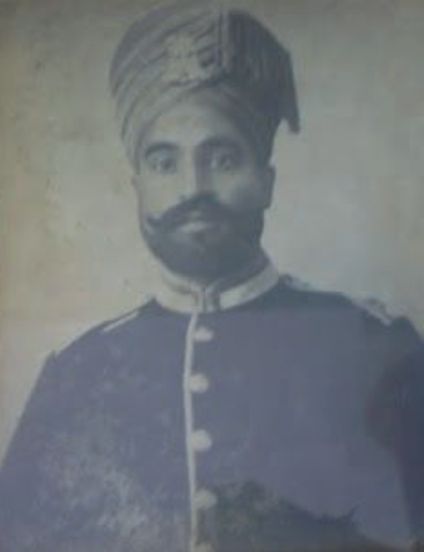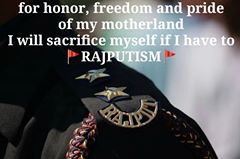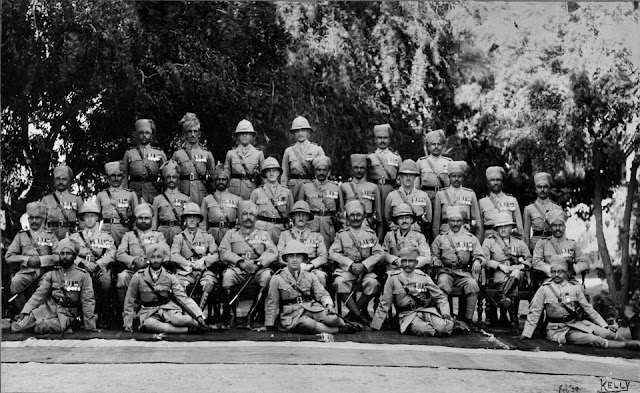
Maharaja Pratap Singh, the third Dogra ruler, ruled Jammu & Kashmir for 40 years from 1885 to 1925, the longest of the all the Dogra emperors. He was known for his generous nature, a moderniser and a visionary.
Out of the four Dogra rulers, Maharaja Pratap Singh’s era can be termed as a period of enlightenment for his subjects, particularly for Kashmiris. He did a lot towards establishing local self governing bodies, democratic processes, educational systems, health care and hygiene and infrastructure development during his rule.
With his tactful and diplomatic efforts he was able to free the state from the undue influence of the British rule in the year 1921.
Maharaja Pratap Singh administered the Dharmarth Trust with great devotion and religious thinking following the footsteps of his father in this noble task. He is thus remembered as Dharam Avtar by the people of J & K .
By 1925, Kashmir, particularly Srinagar had undergone a significant social and cultural transformation. The valley was connected to the outside world by two major road networks and River Jhelum, which was the central artery of communication was further developed.
Large and small size boats ferried people and goods up and down the river in a systematically regularized manner. Commenting upon his rule, British historian Walter Lawrence wrote, “he has done much to change the position of his subjects. His kindness to all classes in Kashmir has won the affection of his people”. Yet little is known and heard of this visionary and benevolent ruler.
Maharaja Pratap Singh, born on 18 July 1848, (corresponding to Samvat 1st Sawan 1905), left for heavenly abode on 23 September 1925 at the age of 77 having ruled the longest and done a great deal for his subjects. A question before us today is are we justified in forgetting an iconic ruler?

Son of Maharaja Ranbir Singh who was a beacon of the Dogra dynasty, and had certainly much to his credit, including the annexation of Gilgit-Baltistan, Hunza and Chitral, criminal and legal reforms like the introduction of the Ranbir Danda Vidhana that also took into account forensic evidences like fingerprints, and pushing for industrialization via support to shawl making, horticulture, silk production and many others. However, in the twilight of his life, frequent illnesses caused him severe disabilities, keeping him away from administrative affairs. In the absence of a strong monarch, corruption, administrative malpractices, and nepotism had taken deep roots into the Jammu and Kashmir state. Several terrible taxes that were originally introduced for the purpose of funding military campaigns continued – in fact, they became routes for siphoning money from the state coffers, rendering it bankrupt. Moreover, Ranbir Singh had three sons – Pratap Singh, Amar Singh and Ram Singh, of which Ram Singh and Amar Singh vied for the throne aggressively. Ranbir Singh held mixed opinions about his eldest son, and in fact wanted Amar Singh to be the heir apparent; fate held it otherwise. British monarchical laws of the time meant that only Pratap Singh could be the legitimate heir to the throne, which meant that in 1885, with the death of Ranbir Singh, Pratap Singh became the third Dogra monarch of the state of Jammu and Kashmir in such contested circumstances and with an almost empty coffer.

While there is some element of truth in the fact that Maharaja Pratap Singh was eager to gain some favor from the British government of India, it does not take away from him several important measures he undertook that transformed the state, much in line with the spirit of the Dogra rulers. With the military conquest phase behind them, the monarchs could truly administer the ailments that afflicted the state, and take them head-on, even if it upset the apple cart for some of the top administrators in the state. While it is often argued by many, including those jaundiced scholars on Kashmir, that the Dogras were not interested in improving the state of affairs of the Kashmiris, facts state otherwise.

It is essential to highlight that Pratap Singh abolished several taxes to give relief to the people despite serious strain on state finances arising from them. Taxes imposed on a host of daily essentials like ghee, and wool were abolished; so were duties like Zar-nakhas on sale of horses and Naosakht on boats and the ravangi on export of Pashmina from Srinagar in 1885 itself. To push for greater industrialization within the state for people’s benefit, monopolies from manufacturer of bricks, lime and paper were withdrawn by the government, thus creating a chance of perfect competition. Even import duties on edibles were removed by his administration.
A silk factory was set up at Srinagar which attained the distinction of being the largest of its kind in the world. In order to feed it with the best quality of cocoons, seeds were imported from Italy and France. A beginning was made in local self-government by establishing municipalities at Jammu, Srinagar, Sopore and Baramulla which improved hygiene and sanitation. Maharaja abolished Muslims Marriage Tax. He closed the state shawl industry to encourage cottage industry.
Transport was facilitated in his domain by leaps and bounds. Roads like the Jhelum Valley Cart Road and the Banihal Cart Road were built. Jammu was linked to Sialkot by rail with personal interest of the Maharaja driving it by 1890. Even cable car communication between parts of Jammu were conceptualized though it failed to become reality. Since he was born at Reasi, he is remembered in Reasi by General Zorawar Singh Memorial Committee on his annual birth anniversaries.
Despite British apathy, Jhelum Valley Cart road, a wonderful mountain road of the world, starting from Kohala to Baramulla was completed in 1889. This was the 1st major initiative in road connectivity. In 1897 it was extended to Srinagar. Thereafter another highway, the Banihal Cart Road (BC Road), connecting Jammu with Srinagar was thrown open to the public in 1922. Besides these highways, many other roads and tracks connecting Srinagar to Gilgit and Leh & many other places were completed.
The benefits of these roads to the general public may be judged from the fact that before Maharaja Pratap Singh’s reign, there wasn’t any Tonga / Bael Gari (wheeled conveyance), nor even a hand driven cart seen in the state.
By the time his rule ended, large boats, B class buses and trucks (motor vehicles) became the principal means of conveyance and transportation.
Besides road connectivity, Maharaja was keen to connect Srinagar with rail. Survey was completed and the plan prepared but it could not be executed because of prohibitive costs.
Another dream project of Maharaja was to build a 79 mile long mono-cable steel ropeway from Jammu to village Doru, across Banihal and from there to connect Srinagar by a 46 mile long light railway. That too could not be started due to lack of finances. However Jammu was linked to Sialkot by rail in 1890 after which Jammu got connected to Delhi and rest of India.

On the front of law and order as well as dignity of humanity, important steps were undertaken by the government. It is convenient that the British residents of the time including Lt. Col. Charles Plowden and Sir Oliver St. John criticized the practices within Kashmir, when their predecessors had in fact approved of them. The case of begar or forced labor during the reign of Maharaja Ranbir Singh was ironically justified on economic grounds with suggestions of improvement by the then British resident; however, seeing the inhumanity of it, Pratap Singh abolished it, and instead declared minimum wages for labor and provisions whenever required by the state. Forceful conscription into the army from every tenth household of a village was stopped, giving much relief to people in Jammu. Further, he reformed the criminal code to ensure that people got equal sentences irrespective of their caste and stature within society. This also goes to show that far from British coercion, reforms were initiated by the Maharaja, a conservative Hindu with a modern outlook, of his own volition.

On the education and administrative fronts too, Pratap Singh made several important contributions. Schools and colleges were opened in Jammu and Srinagar, while existing schools were refurbished and remodeled so that the best of modern education could be imparted. Amar Singh College was formally opened by Maharaja Partap in 1914 as Technical Institute. Later in 1942 it was converted into Amar Singh College.
Municipal corporations to govern the two cities were also created. Rules and policies on matters of education, public service and administrative issues like the creation of an administrative council to look after matters were drafted and implemented for the first time. Lot of stress was laid on popularising education. Number of boys and girls schools and hostels were opened. Primary education was made free. Grants for education were budgeted. Several initiatives were taken to educate Muslims. Unqualified teachers were sent to Lahore for training. One degree college each at Srinagar and Jammu were opened.
First one was started in Srinagar in 1905 and was named ‘Sri Pratap College’. The other was established in Jammu in 1907 which was named ‘Prince of Wales College’, commemorating the visit of His Royal Highness, Prince of Wales, the future King George V. As a great visionary, he created institutions of higher learning in Jammu & Kashmir regions. Amar Singh Technical Institute was established in Srinagar in 1914 and Sri Pratap Technical School was set up at Jammu in 1924.
By 1938, Sri Pratap College, with 1187 students was adjudged as the second largest college affiliated to Panjab University.
Real drive in modernisation of health care occurred during Maharaja Pratap Singh era.
Kashmir Mission Hospital was expanded which soon became a hub of health care activities. In 1889, in two largest cities of J&K, Jammu & Srinagar, two govt Hospitals were commissioned. He inaugurated separate hospitals for males (Mardana) and females (Zenana) at Srinagar and Jammu. In other towns and important villages, dispensaries were started under qualified doctors. These initiatives went a long way in improving the health of the people. Smallpox used to take a very heavy toll of life in the valley. Large scale vaccinations were administered in 1894 to prevent it.
To prevent floods in Srinagar a wide spill channel was constructed in 1904 which diverted the flood waters of Jhelum. Several irrigation canals were constructed in Jammu and Kashmir. Maharaja Pratap Singh also constructed two canals: Ranbir Canal and Pratap Canal and there by increased the irrigation facilities leading to further progress in agriculture. The longest and most important of these is the Ranbir Canal in Jammu with a total length of 251 miles including its tributaries. It was completed in 1911 and cost Rs. 35,36,714.
This Canal also helped in propelling the turbines of the Jammu hydro-electric stations. Another irrigation channel in Jammu, the Pratap Canal, irrigates vast tracts of land in Jourian, Khour and Pallanwala. 250 rain water harvesting ‘Talabs’ were constructed in Kandi areas with a view to minimise distress of the residents. The power obtained from the hydro-electric works established at Mohara in 1907 was used not only for lighting and industrial purposes but also for dredging in Jhelum.
VICTIM OF THE GREAT GAME
While the Maharaja was on a path of transforming the state, the Great Game began. Having taken control of region after region in Central Asia, Russia had after the Crimean war come very close to the British Indian domain, right next to Afghanistan. By sheer luck, a small sliver retained by Afghanistan was all that divided Russia under the Romanovs and the British India. In such circumstances, the British under the influence of Mortimer Durand, had started to hear alarm bells on the north-western border, and had started to believe that while the North West Frontier Province was secured with a border after understanding with the Amir of Afghanistan, the state of Jammu and Kashmir would have to play a similar role, especially the areas of Chitral, Hunza, Nagar and Gilgit, whose rulers accepted the Dogra suzerainty.
The conquest of Nilt Fort, Hunza - 20th December,1891. Final assault was carried out by the 100 Dogras and Gurkhas of 2nd Battalion, The Jammoo and Kashmir Regiment of Maharaja Partap Singh's Forces a.k.a 'The Body Guard'.Battle was fought against a formidable well entrenched enemy on top of the Hill. These brave men scaled the treacherous and tough 1200 feet steep wall at dawn. Edward Frederick Kinght, author & a soldier who fought in this battle describes an intense fight.Knight says,“I observed from my position from the adjacent hill, with heavy odds against them they penetrated the fort. We saw 1000s of enemy tribesmen fleeing from other side of the fort,among them Kanjut Forces, Horse Cavalry, General Wazir Dadu & infamous Uzr Khan of Nagar. The whole battle was carefully planned & hard fought, against a formidable adversary which outnumbered our valiant troops. It must be appreciated & shows what stuff the Dogra Soldiers are made from, they acquitted themselves admirably in this assault, which was calculated to try the nerve of the staunchest soldiers that ever fought.”
Within the state, matters were not necessarily pleasant either. Raja Amar Singh and Raja Ram Singh were always displeased with the succession of Pratap Singh, and had decided to play ball with the British resident and the former Prime Minister Lachman Das to defang the Maharaja. In 1889, the new Resident Perry Nisbet, purportedly friendly to Pratap Singh got access to thirty-four letters supposedly written in Dogri that supposedly unraveled nefarious plans of the Maharaja in collusion with Dalip Singh, the former ruler of Lahore and son of Maharaja Ranjit Singh, and the Russian empire. The letters also apparently mentioned plots to kill Nisbet as well as Ram Singh, Amar Singh and their families in exchange of money. Nisbet read the riot act, and vouched for the genuineness of the letters, which did not make sense for a whole host of reasons. In the words of the Maharaja himself:
‘..who is in Russia to read Dogra vernacular?....who is the fool in the world to commit such base conspiracies in writing?..’

Nevertheless, the British resident took it up with the then Governor General Lord Dufferin, who decided that the Maharaja be defanged for all practical purposes. The Provincial council, of which Amar Singh and Ram Singh were important members, were given all the powers to govern, reducing Pratap Singh to a mere ceremonial figure. Moreover, the state was forced to give Gilgit, Baltistan, Chitra, Hunza and Nagar provinces on lease to the British government, who controlled it via their military. The Great Game had a victim of circumstances, especially a man who could have changed the picture of the state much more. A coup d’etat had been successfully conducted by the British in the state of Jammu and Kashmir, which had no role to play, which had a monarch who was willing to go the extra mile to accommodate British concerns, and who also, through his personal goodwill, asked people of Jammu and Kashmir to help the British government during World War I.
By the time, post World War I, when impressed by the Dogra forces and the ‘conduct of the Maharaja’ the British government restored some of the powers, he was in no condition to enjoy it, and he died in 1925. His wife had died much earlier, and he had never had a child, and so eventually, he was succeeded by Maharaja Hari Singh, the son of Amar Singh.





























































































